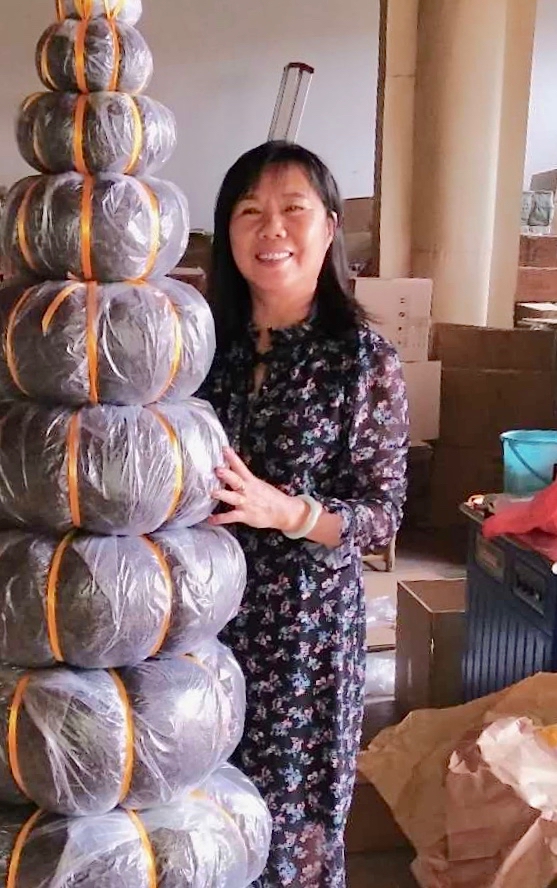
Gong Liping was born in 1955 in Ninglang County of old Puer City, now known as Ninger. This was a busy distribution center and wholesale market for puer tea since antiquity. Surrounded by many mountains renowned for producing high quality puer tea, this was the starting point for the famed tea horse trade route. When puer tea became famous both at home and abroad in the early 2000s, for marketing reasons the Chinese government officially gave the name Puer City to the city formerly called Simao in 2007, and old Puer City was renamed Ninger. However, Ninger remains the original hub of puer trade.
Ms. Gong has been around tea since childhood. In the 1980s, after graduating from college, she began working in Yunnan’s oldest existing puer tea factory. The building that houses the tea factory was a school during the Qing Dynasty, and its structure has been repaired many times and is still in use. The factory’s long history of use for puer processing creates a special microbial environment that plays an important role in the fermentation of shu puer tea.
Ms. Gong visited each of the famous puer tea mountains to learn from their tea masters and learn about the production of raw unfinished puer mao cha. She then learned the techniques for blending teas and compressing puer tea cakes into the traditional disk and gourd shapes. She also learned the complicated techniques to microbially ripen raw sheng puer mao cha into the popular fermented shu puer. She has developed careful methods for processing special high quality mao cha such as the purple leaves of the Zi Juan variety tea tree into very fine shu puer. She is highly respected in the Ninglang County tea industry for her exceptional skill in crafting puer tea. She is one of the few female tea makers in a trade traditionally occupied by men.

Ran Yijun works with Gong Liping to source and collect raw puer tea mao cha for her to process. He is also a Ninglang County native who grew up around tea. He has cultivated a lifelong love of puer tea and began working in the puer industry in 2004. His work takes a great deal of research and exploration to determine the quality of puer mao cha from different regions and mountain ranges in Yunnan. His talent for identifying differences between tea leaves from old growth trees, forest grown tea, and large leaf and small leaf tea plants is critical to sourcing good quality tea. He continues to promote puer tea culture and appreciation through his work.
